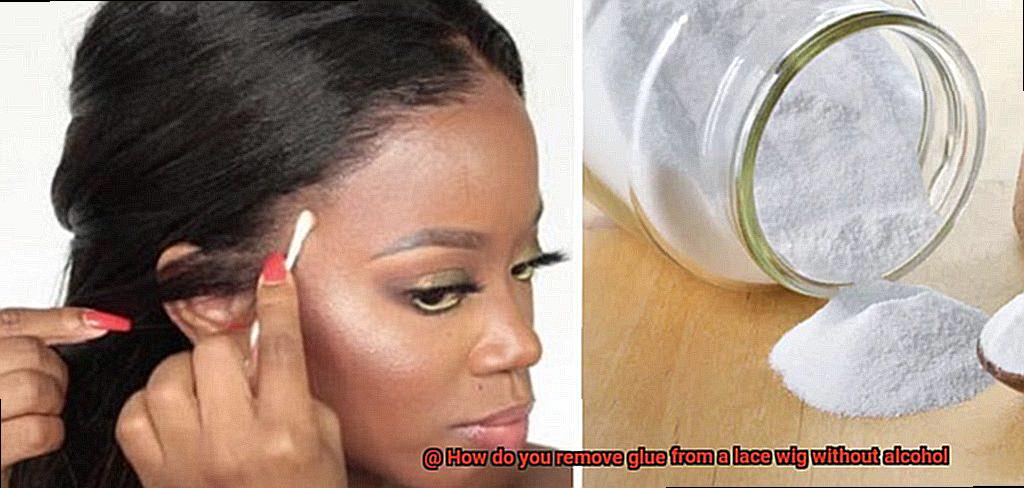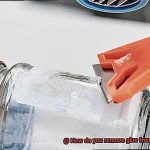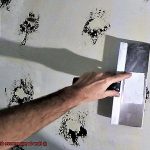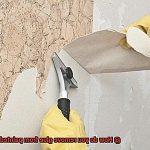Today, we’re going to spill the beans on a total game-changer: a method for removing glue from a lace wig without using alcohol. Whether you’re a seasoned wig wearer or just dipping your toes into the world of lace wigs, we get how frustrating it can be when that pesky residue sticks around.
Sure, alcohol is often the go-to solution, but sometimes it can wreak havoc on delicate lace and hair fibers. That’s why we’ve done our homework, spending hours researching and experimenting with alternative methods.
And guess what? We’ve found an effective and gentle way to bid farewell to glue without any alcohol involved.
Say goodbye to alcohol worries and hello to a stress-free glue removal process that’ll have your lace wig looking flawless in no time.
What is Glue and How Does it Affect a Lace Wig?
Contents
- 1 What is Glue and How Does it Affect a Lace Wig?
- 2 Alternative Methods for Removing Glue from a Lace Wig Without Alcohol
- 3 Method 1: Using Warm Water and Mild Shampoo
- 4 Method 2: Using Natural Oils
- 5 Method 3: Homemade Glue Remover with Baking Soda and Vinegar
- 6 Commercial Adhesive Removers for Lace Wigs
- 7 Tips for Gently Removing Glue from a Lace Wig
- 8 Conclusion
The world of lace wigs is a fascinating one, where adhesive plays a crucial role in creating a flawless and natural look. Understanding the different types of glue and their effects on your lace wig is essential for maintaining its longevity and overall appearance. In this article, we will delve into the intricate world of glue and explore its impact on your lace wig.
Types of Glue:
- Water-based glue: This adhesive is popular for its ease of use and gentle removal process. It provides a strong hold without causing excessive damage to the delicate lace or your natural hairline.
- Solvent-based glue: Offering a longer-lasting hold, these adhesives are ideal for individuals who require extended wear time. However, they can be more challenging to remove.
- Medical-grade adhesive: Utilized by professionals, medical-grade glues are hypoallergenic and suitable for those with sensitive skin. They provide a secure hold while minimizing the risk of irritation or allergies.
Effects on Lace Wigs:
- Seamless hairline: Properly applied glue creates an undetectable hairline, making the wig appear as if it is growing naturally from your scalp. This enhances the overall realism and beauty of the wig.
- Strong hold: Glue ensures that your lace wig stays firmly in place, even during physical activities or windy conditions. You can confidently rock any hairstyle without worrying about your wig shifting or coming loose.
- Potential issues: Excessive use of glue can lead to visible residue through the lace, resulting in an unnatural appearance. Additionally, some individuals may experience skin irritation or allergies from certain types of glue. It is crucial to perform a patch test and select an appropriate adhesive for your skin type.
Removing Glue:
- Warm water and mild shampoo: Soak the wig in warm water with a small amount of mild shampoo to soften the adhesive. Gently rub the glue off the lace using your fingers or a soft brush. Rinse thoroughly to remove any residue.
- Natural oils: Apply coconut oil or olive oil directly onto the glue and let it sit for 10-15 minutes. The oil will soften the adhesive, making it easier to remove. Use a comb or your fingers to gently lift the glue off the lace, and wash the wig afterward.
- Homemade glue remover: Create a paste-like consistency by mixing equal parts baking soda and vinegar. Apply it onto the glue and let it sit for 10 minutes. Gently scrub away the glue with a soft brush or your fingers before rinsing with warm water.
- Commercial adhesive removers: Alcohol-free products specifically designed for removing wig glue are available. Follow the instructions provided to ensure safe and effective removal.
Alternative Methods for Removing Glue from a Lace Wig Without Alcohol
Maybe you’re concerned about the potential damage or discoloration that alcohol can cause. Well, fear not. There are alternative methods that can effectively remove glue from your lace wig without the use of alcohol. So grab a cup of tea and let’s dive into these gentle yet effective solutions.
First up, we have the trusty combination of warm water and mild shampoo. Fill a basin or sink with warm water and add a small amount of mild shampoo. Immerse your lace wig in the water and let it soak for a few minutes. Then, using your fingers or a soft brush, gently scrub away the glue residue until it loosens and comes off. Rinse the wig with clean water and let it air dry. Voila. Glue-free and ready to go.
Another option is to embrace the power of oils. Baby oil or olive oil can work wonders in removing glue from your lace wig. Simply apply a small amount of oil directly onto the glued areas and let it sit for a few minutes to soften the glue. Then, gently rub or massage the oil into the glue to loosen it. Use a comb or your fingers to remove the glue residue, and then wash the wig with mild shampoo and warm water to remove any remaining oil. Easy peasy.
If you prefer natural ingredients, you can try using lemon juice or vinegar. Mix equal parts lemon juice or vinegar with warm water and apply it to the glued areas of your wig. Let it sit for a few minutes, then gently scrub or massage the mixture into the glue to loosen it. Rinse the wig with clean water and shampoo as usual. The fresh scent of lemon or vinegar is an added bonus.
It’s important to keep in mind that these alternative methods may require more time and effort compared to using alcohol. Additionally, results may vary depending on the type of glue used and the condition of your wig. So be patient and gentle during the process.
Before trying any of these methods, it’s always a good idea to test them on a small, inconspicuous area of your wig to ensure that they won’t cause any damage or discoloration. And if none of these methods work, don’t hesitate to seek professional help or consult with a wig specialist who can provide further guidance and assistance.
Method 1: Using Warm Water and Mild Shampoo
Cleaning your hair is an essential part of maintaining its health and appearance. While there are various methods available, using warm water and mild shampoo is a simple yet effective way to cleanse your locks. In this article, we will guide you through the step-by-step process of using warm water and mild shampoo to clean your hair. Say goodbye to dirt, oil, and product buildup as we explore this gentle yet efficient method.
Step 1: Prepare the Soapy Solution
The first step is to fill a basin or sink with comfortably warm water. It’s important to ensure that the water temperature is neither too hot nor too cold, as extreme temperatures can damage your hair. Once you have filled the basin, add a small amount of mild shampoo to the water. Opt for a sulfate-free shampoo to avoid stripping your hair of its natural oils. Gently stir the water and shampoo mixture to create a soapy solution.
Step 2: Wet Your Hair
Before applying the soapy solution, wet your hair thoroughly with warm water. This step helps to open up your hair cuticles, allowing the shampoo to penetrate deeply and cleanse effectively.
Step 3: Apply the Soapy Solution
Now that your hair is wet, it’s time to apply the soapy solution. Pour a small amount of the solution onto your palm and work it into a lather. Begin applying the lathered shampoo onto your scalp, massaging gently with your fingertips. Gradually work the lather down to the ends of your hair, ensuring all strands are covered.
Step 4: Rinse Thoroughly
Once you have thoroughly massaged your scalp and hair with the soapy solution, rinse your hair with warm water. Make sure to rinse until all traces of shampoo are removed from your scalp and hair.
Step 5: Condition (optional)
After rinsing, you may choose to apply a conditioner to your hair. This step helps to restore moisture and provide additional nourishment. Apply the conditioner evenly throughout your hair, focusing on the ends. Leave it on for a few minutes before rinsing thoroughly with warm water.
Step 6: Pat Dry
After rinsing out the conditioner, gently pat your hair dry with a towel. Avoid rubbing your hair vigorously, as this can cause frizz and breakage. Instead, use a soft towel to absorb excess moisture.
Step 7: Air Dry or Style
Finally, allow your hair to air dry naturally or style it as desired. If you choose to style your hair using heat tools, make sure to apply a heat protectant beforehand to minimize damage.
Method 2: Using Natural Oils
Look no further. In this comprehensive guide, we will unveil the magic of using natural oils to effortlessly remove glue, leaving your lace wig clean and residue-free. Get ready to bid farewell to sticky residue and say hello to beautiful, natural-looking hair.
The Power of Coconut Oil:
Coconut oil is a powerful natural alternative to alcohol for removing glue from lace wigs. Its adhesive properties make it highly effective in dissolving glue. To use coconut oil, generously apply it to the glued area and let it sit for 10-15 minutes. As the oil starts to work its magic, it gradually breaks down the glue, making it easier to gently peel off.
Olive Oil: Another Adhesive Wonder:
If you don’t have coconut oil on hand, fret not. Olive oil works wonders too. Apply a small amount of olive oil to the glued area and allow it to sit for a few minutes. This process helps break down the adhesive properties of the glue, making removal a breeze.
Baby Oil and Almond Oil:
For those looking for additional alternatives, baby oil and almond oil can also do the trick. These oils work similarly by breaking down the adhesive properties of the glue. Apply them as you would coconut or olive oil and watch as the glue dissolves away.
Patience is Key:
While natural oils are incredibly effective, they may not work as quickly as alcohol. Some patience and gentle effort may be required during the removal process. Take your time and be gentle with your wig to avoid any damage.
Post-Glue Removal Care:
Once you’ve successfully removed the glue using natural oils, it’s essential to wash your wig thoroughly with a mild shampoo and conditioner. This step ensures that any residue left behind by the oils is completely eliminated, leaving your wig looking fresh and clean.
Test Before Applying:
Different types of glue may require different removal methods. Before applying any oil to the entire glued area of your wig, it’s crucial to test a small area first. This helps you determine if the oil is suitable for your specific glue and prevents any potential damage.
Method 3: Homemade Glue Remover with Baking Soda and Vinegar
When it comes to removing stubborn glue residue from surfaces, especially lace wigs, finding an effective and gentle solution is crucial. In this comprehensive guide, we will explore how to create a homemade glue remover using two common household ingredients: baking soda and vinegar. This natural alternative is not only safe for your lace wig but also ensures that it remains in pristine condition for future use. Get ready to say goodbye to glue residue and hello to flawless hair.
Step 1: Gather Your Ingredients
To start, gather equal parts baking soda and vinegar. The amount you need will depend on the size of your wig and the extent of the adhesive.
Step 2: Create the Homemade Glue Remover
In a bowl, combine the baking soda and vinegar until you achieve a paste-like consistency. Don’t worry about being precise; the goal is to ensure the ingredients are well mixed.
Step 3: Apply the Mixture
Using a soft toothbrush or your fingertips, apply the paste directly onto the areas with glue residue. Gently massage the mixture into the wig, paying particular attention to the glued areas. Remember to be gentle to protect the delicate lace and hair strands.
Step 4: Let it Work its Magic
Allow the mixture to sit on the wig for approximately 10-15 minutes. During this time, you may notice some bubbling or fizzing – a sign that it’s effectively breaking down the adhesive.
Step 5: Rinse Thoroughly
After the designated waiting time, thoroughly rinse the wig with lukewarm water. Ensure that all traces of the baking soda and vinegar mixture are completely removed.
Step 6: Comb Out Residue
Using a wide-toothed comb or brush, gently comb through the wig to remove any remaining glue residue. Take your time and be patient to prevent any hair strands from being pulled or damaged.
Step 7: Wash and Condition
Once all the glue has been removed, proceed to wash and condition the wig as you normally would. Opt for a mild shampoo and conditioner specifically designed for lace wigs to restore its shine and manageability.
Commercial Adhesive Removers for Lace Wigs
Step into the world of lace wigs, where natural beauty and versatility collide. But what about the dreaded glue residue? Fear not. Commercial adhesive removers are here to save the day, ensuring a seamless removal experience without any damage. Join us on this comprehensive journey as we explore the ins and outs of using these magical products.
Choosing the Perfect Remover:
In a sea of options, how do you choose the right adhesive remover for your lace wig? Dive into the refreshing world of C-22 Citrus Solvent, the gentle yet effective solution that leaves behind a divine citrus scent. Or why not try Walker Tape Lace Release, specially formulated to remove adhesive from lace materials with utmost care? Ghost Bond XL Adhesive Remover is also worth considering, with its powerful formula that swiftly dissolves residue without leaving any oily traces.
The Art of Application:
Now that you have your chosen remover in hand, it’s time to get down to business. First things first, read those instructions like a pro. They hold the key to achieving optimal results and preventing any mishaps. Ready? Spray or apply the remover directly onto the glued area of your lace wig. Allow it a few moments to work its magic as it penetrates and dissolves that pesky bond.
Let the peeling begin. Start from one side and gently peel off the wig, taking care not to pull or tug too forcefully. Preserve both your natural hair and the delicate lace with finesse. If any stubborn residue remains, simply apply more remover or grab a clean cloth to wipe it away with grace.
Tips for Triumph:
Remember, my friend, patience is your secret weapon. Take your time during the removal process to avoid unnecessary havoc. Stuck with stubborn residue? Fear not. Repeat or tweak your technique ever so slightly until victory is yours. And always perform a patch test in a hidden area of the wig to ensure compatibility with your chosen remover.
Tips for Gently Removing Glue from a Lace Wig
Removing glue from a lace wig is an essential task that requires careful handling to avoid damaging the wig or causing discomfort to the wearer. Harsh methods, such as using alcohol, can strip the wig’s delicate lace and irritate the scalp. But fear not. There are alternative ways to remove glue gently without compromising the integrity of your wig. In this guide, we will explore some tips and techniques to help you safely and effectively remove glue from your lace wig.
Gather Your Supplies:
Before embarking on the glue removal process, it is crucial to gather all the necessary supplies. You will need a wide-tooth comb to detangle the hair, adhesive remover (alcohol-free), cotton balls or pads for application, and a clean cloth or towel for drying. Having everything within reach will ensure a smooth and seamless process.
Start by Detangling:
Begin by gently combing through the wig with a wide-tooth comb to remove any tangles or knots. Take care not to pull too forcefully on the hair, as this can cause unnecessary damage.
Apply Adhesive Remover:
Dab an ample amount of adhesive remover onto a cotton ball or pad and apply it to the areas with glue residue. Allow the adhesive remover to sit for a few minutes, giving it time to penetrate and loosen the glue.
Massage and Comb:
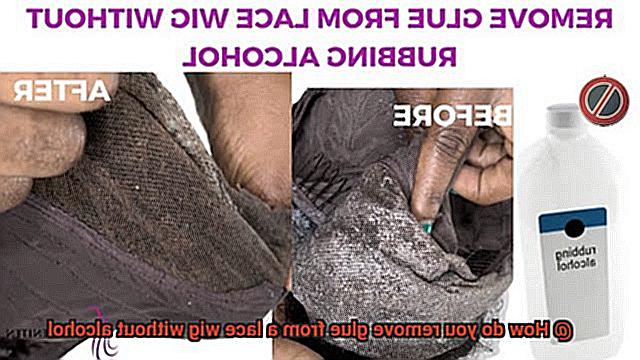
Using gentle circular motions, massage the adhesive remover into the glued areas. This will help break down the glue without causing harm to the wig. Next, take your wide-tooth comb and carefully comb through the hair while applying slight pressure. Patience is key during this step; take your time to ensure thorough removal without causing any unintended damage.
Repeat if Needed:
If there are still traces of glue remaining, repeat steps 3 and 4 until all the adhesive has been successfully removed. It is better to be thorough and cautious than to rush the process and risk damaging the wig.
Rinse and Dry:
Once all the glue has been removed, rinse the wig with lukewarm water to eliminate any leftover adhesive remover. Gently pat dry the wig with a clean towel or cloth, being mindful not to rub or twist the hair excessively. Allow the lace wig to air dry completely before styling, as excessive heat can lead to damage.
f9BEJziaBsA” >
Also Read: How To Remove Glue In Hair Extensions?
Conclusion
Removing glue from a lace wig without alcohol can be a tricky task, but fear not. There are alternative methods that can save the day. Say goodbye to sticky residue and hello to a clean and flawless wig.
One option is to use an oil-based product, such as coconut oil or olive oil. These natural wonders work wonders in breaking down the adhesive, making it easier to remove. Simply apply the oil onto the affected area and let it sit for a few minutes. Then gently comb through the wig, starting from the ends and working your way up. The glue will gradually loosen its grip, allowing you to effortlessly slide it off.
Another technique involves using warm water and gentle soap. Fill a basin with warm water and add a small amount of mild shampoo or dish soap. Submerge the lace wig into the soapy mixture and let it soak for about 10-15 minutes. Then carefully rub the glued areas with your fingertips or a soft cloth until the residue starts to dissolve. Rinse thoroughly with clean water and pat dry with a towel.
For those who prefer an even more natural approach, try using lemon juice or vinegar. These acidic substances have excellent adhesive-dissolving properties. Mix equal parts lemon juice or vinegar with water in a spray bottle. Spritz the solution onto the glue spots and let it sit for a few minutes before gently wiping away with a cloth or sponge.
Remember, when removing glue from your lace wig, patience is key. Take your time and be gentle to avoid damaging the delicate lace or hair fibers. And always follow up with proper cleansing and conditioning to keep your wig looking fabulous.
So there you have it – no need for alcohol when it comes to removing glue from your beloved lace wig.

